A Quick Guide to Death Valley National Park
Things to do and see at Death Valley National Park
Encompassing over 3.4 million acres, the Death Valley National Park is home to a variety of geological wonders like sand dunes, canyons, and mountains. In this guide, we'll explore everything you need to know to make the most of your visit to Death Valley. From top attractions to outdoor activities, visitor information, and more, we've got you covered.
Introduction to Death Valley National Park
Death Valley National Park is a unique and fascinating destination that offers visitors a glimpse into the beauty of the desert landscape. The park is located in eastern California, bordering Nevada, and is home to a diverse range of geological formations and natural wonders. From the towering Panamint Range to the expansive salt flats and Badwater Basin, there is a lot to see and explore in the park.

Climate and Weather
Death Valley is known for its extreme heat, with summertime temperatures frequently exceeding 100 degrees Fahrenheit (or 38 degrees Celsius), with the highest temperature recorded even exceeding 130 degrees Fahrenheit (or 54.4 degrees Celsius). Despite the heat, the park receives minimal rainfall, making it a popular destination during the cooler months. The best time to visit is during the fall and spring when temperatures are more tolerable.
Despite the harsh climate, the park is home to a range of unique and fascinating plant and animal species. Visitors can spot desert bighorn sheep, coyotes, and kit foxes, as well as a range of bird species such as roadrunners and golden eagles.
Top Attractions and Landmarks
Death Valley is a national park located in California, known for its unique and otherworldly landscapes. Here are some of the top attractions and landmarks to visit during your trip:
Badwater Basin
A visit to Death Valley wouldn't be complete without seeing Badwater Basin, the lowest point in North America at 282 feet below sea level. The salt flats transform into stunning patterns of white that seem to stretch on forever. The basin was formed by a combination of geological processes, including the evaporation of ancient lakes and the movement of tectonic plates. The salt flats are home to unique microorganisms adapted to the harsh environment, making it a fascinating place to explore. At night, the stars shine brilliantly overhead, making for a magical experience.
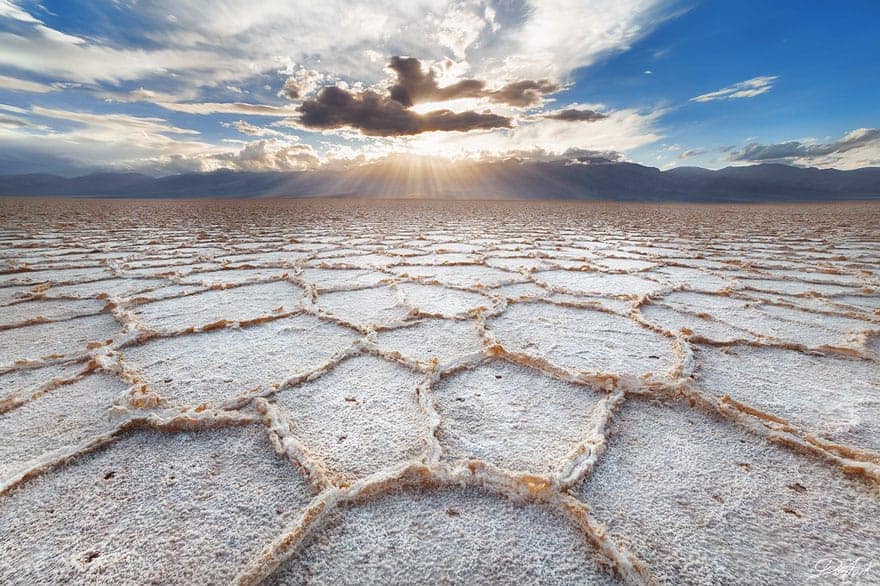
Zabriskie Point
Zabriskie Point provides visitors with panoramic views of the varied landscapes of Death Valley, including the golden hills, Dante's View, and Manly Beacon. The colors of the rock formations will leave you in awe. The point is named after Christian Zabriskie, a vice president and general manager of the Pacific Coast Borax Company, who helped develop the mining industry in the area. The point has also been featured in several films, including the 1970 film "Zabriskie Point" by Michelangelo Antonioni. Head to Zabriskie Point early in the morning to catch one of the most beautiful sunrises in Death Valley.
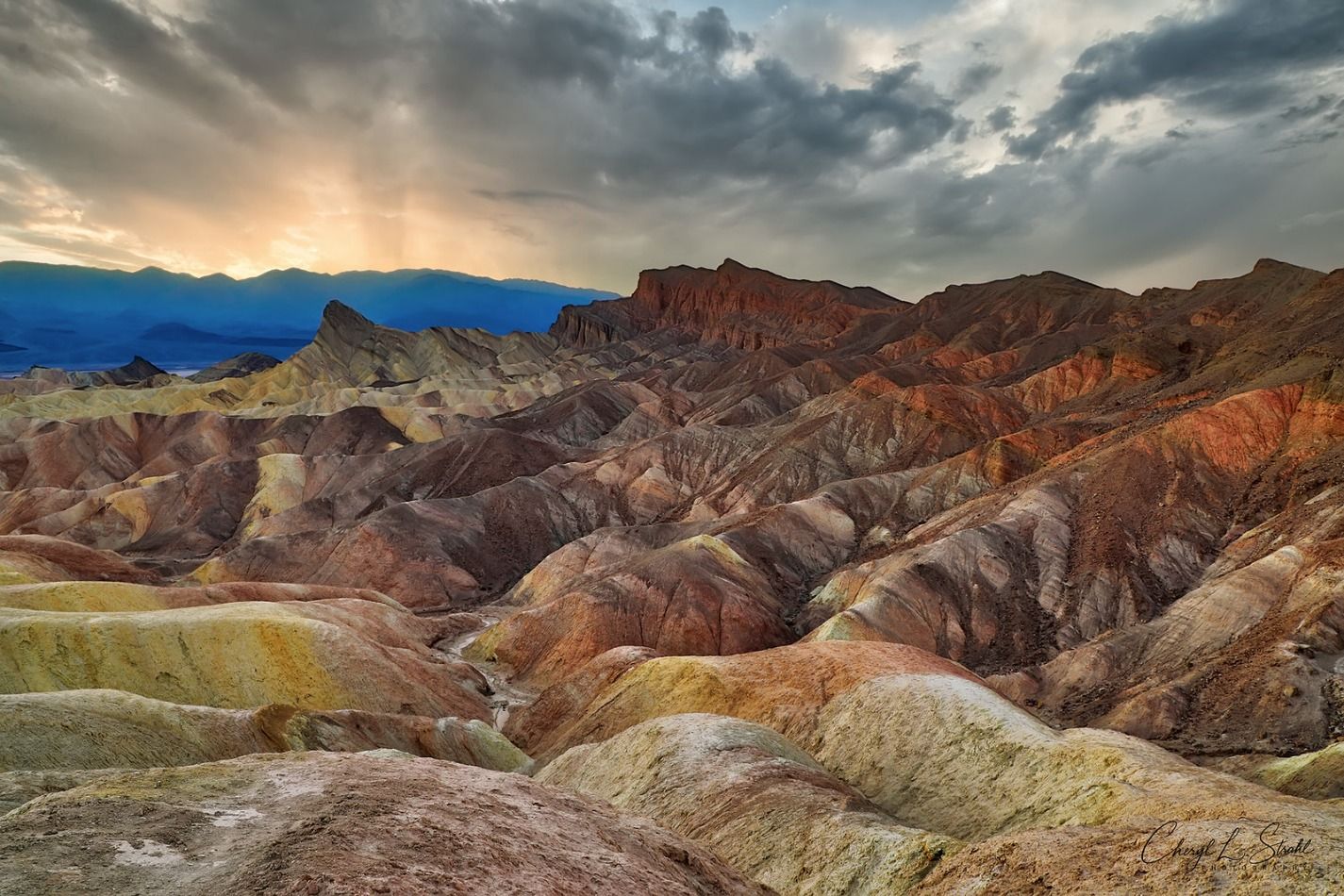
Mesquite Flat Sand Dunes
For those who love hiking in the sand, Mesquite Flat Sand Dunes is a must-visit spot in Death Valley. The dunes reach over 100 feet tall in some areas, making for a scenic and magical hike. The dunes were formed by the erosion of the Cottonwood Mountains and the transportation of sand particles by the wind. The dunes are home to a variety of wildlife, including the fringe-toed lizard and the sidewinder rattlesnake. It is also a prime location for those who want to have a go at sandboarding. The Mesquite Flat Sand Dunes is also a great spot for stargazing, so if you will be visiting sometime near the new moon, consider staying out for a breathtaking view of the night skies.

Dante's View
Located on the crest of the Black Mountains, Dante's View offers panoramic views of the entire park, including Badwater Basin and the mountains beyond. The viewpoint is named after Dante Alighieri, the author of The "Divine Comedy," and was first visited by a group of prospectors in the 19th century. Sunrises and sunsets are especially stunning from this vantage point, as the colors of the landscape change with the shifting light.

Artist's Palette
The colorful mineral deposits of Artist's Palette are a feast for the eyes. Here, you'll find a dazzling array of colors in the rock formations, including greens, blues, pinks, and purples. The view is especially stunning during golden hour when the colors are illuminated by the setting sun. The palette was formed by volcanic activity and the oxidation of metals in the rocks. The colors are caused by the presence of different minerals, including iron, manganese, and copper.

Outdoor Activities and Adventures
If you're looking for an adventure, Death Valley National Park has plenty of outdoor activities to offer. From hiking to stargazing, there's something for everyone. Here are some of the top activities to add to your itinerary:
Hiking Trails
With over 700 miles of hiking trails, Death Valley provides endless opportunities for adventure. Whether you're a seasoned hiker or a beginner, there's a trail for you. Must-do hikes include Fall Canyon, Darwin Falls, and Golden Canyon, all offering stunning scenery and a chance to get close to Death Valley's unique natural formations.
For a more challenging hike, consider tackling Telescope Peak, the highest point in Death Valley at 11,049 feet. The hike is a strenuous 14-mile round trip, but the views from the top are worth it.
If you will be hiking in Death Valley, make sure you have sufficient water and keep yourself hydrated. You should also start hiking earlier in the day to beat the extreme mid-day heat.
Off-Roading
Death Valley is a great place for off-roading enthusiasts, with several routes that offer exciting and scenic drives. The Titus Canyon route, for example, is a one-way road that takes drivers through an incredible gorge, past abandoned mines and ghost towns, and eventually leads back to the park entrance.
If you're looking for a more challenging off-road adventure, consider driving the Lippincott Mine Road. This 4x4 trail is not for the faint of heart, with steep drop-offs and narrow passages, but it offers stunning views of the surrounding mountains and valleys.
Stargazing
Death Valley is also a designated "dark sky" park, meaning the night skies are free from light pollution, providing an unparalleled stargazing experience. You can join ranger-led programs or head out on your own for some unforgettable celestial views.
For the best stargazing experience, head to the Mesquite Flat Sand Dunes, where you'll have an unobstructed view of the night sky. Bring a blanket and some hot cocoa and enjoy the show.
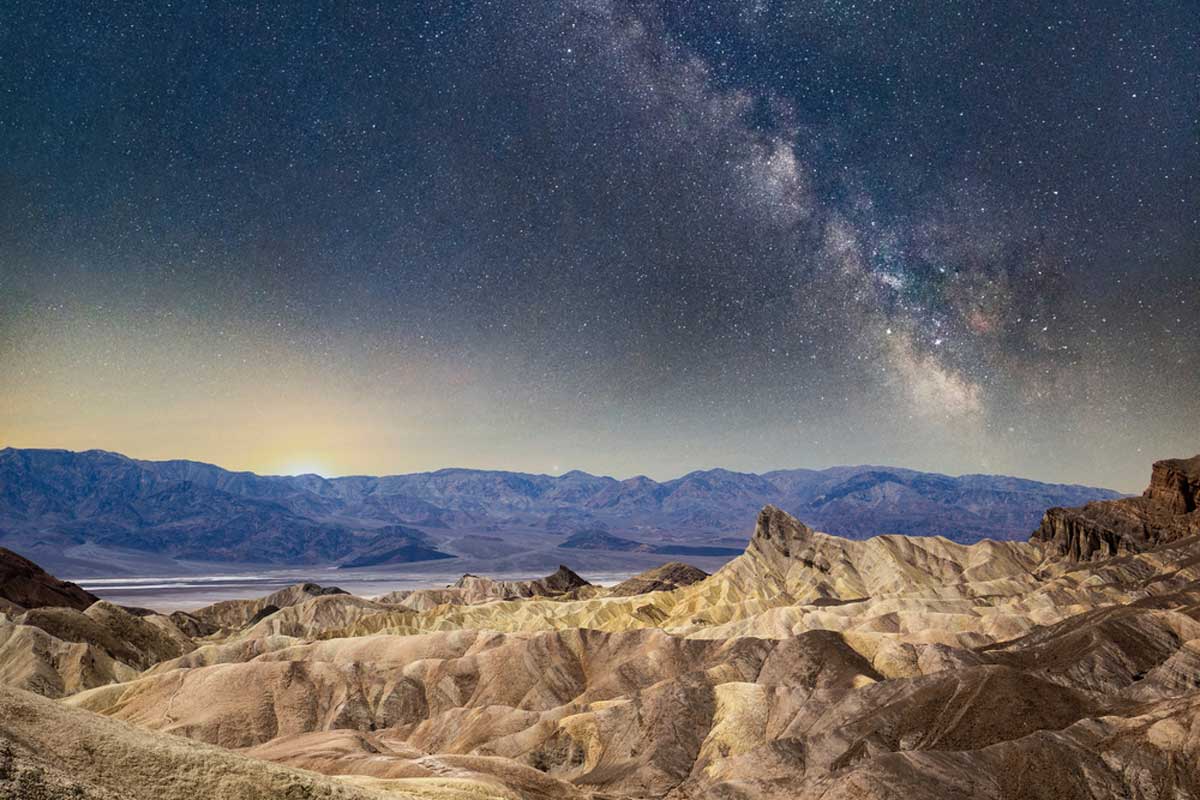
Wildlife Watching
Despite the desert's harsh environment, Death Valley is home to many wildlife species, including bighorn sheep, coyotes, and jackrabbits. The best times for wildlife watching are early morning and late afternoon, when temperatures are cooler, and the animals are more active.
If you're lucky, you may even spot a rare desert tortoise. These slow-moving creatures are an important part of the desert ecosystem, and sightings are becoming increasingly rare.
Visitor Information and Tips
If you're planning a trip to Death Valley National Park, there are a few things you should know before you go. Here are some tips and information to help you make the most of your visit.
Best Time to Visit
The fall and spring are the best times to visit Death Valley. During these months, temperatures are more moderate, and the park is less crowded. The winter months can also be a good time to visit, as the park's higher elevations may receive snowfall, creating a beautiful contrast against the desert landscape. If you must visit during the summer months, remember to stay hydrated and take precautions against the heat. The park can reach temperatures of over 120 degrees Fahrenheit, so it's crucial to plan accordingly.
Before your visit, be sure to check the National Park Service website for any park or road closures.
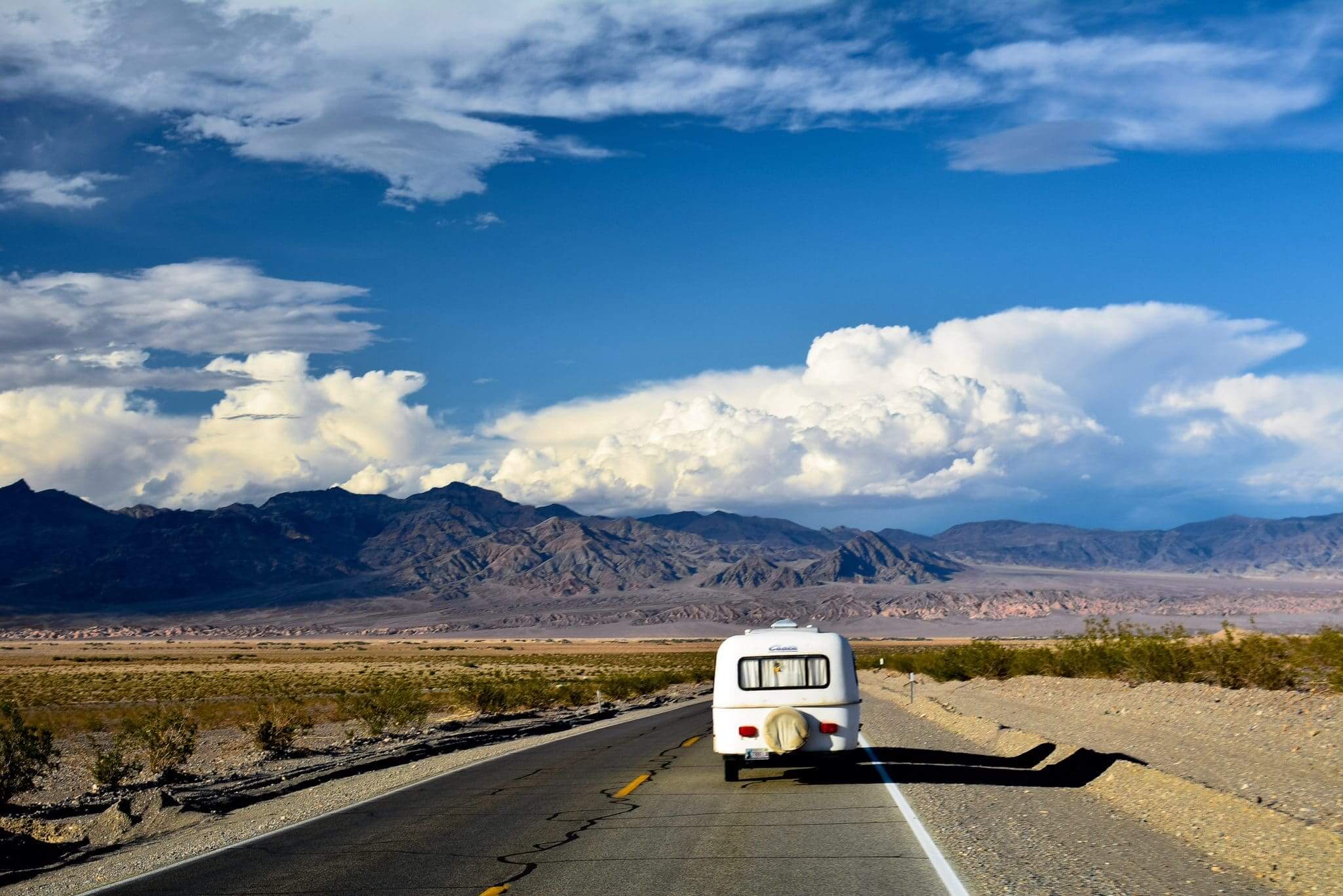
Entrance Fees and Permits
If you're planning to visit Death Valley National Park, you'll need to pay an entrance fee. The entrance fee for Death Valley National Park is $30 per vehicle or $25 per motorcycle and is valid for seven days. You can also purchase an annual park pass for $55, which gives you unlimited entry to the park for a year. Permits are required for some activities, such as camping and backcountry hiking. If you're planning to camp in the park, make sure to obtain a permit and reserve your campsite in advance.
Payment for entrance and campground fees have to be made via debit/credit cards or digital payments, and cash will not be accepted. You can purchase your entrance pass online prior to visiting the park.
Safety Precautions
The desert can be a dangerous environment, so it's essential to take necessary precautions when visiting Death Valley National Park. Visitors should stay hydrated, wear sunscreen, and avoid hiking during the hottest parts of the day. It's also important to bring plenty of water and snacks with you on your hikes. Cell phone service is limited in the park, so make sure to let someone know where you're going and when you plan to return.
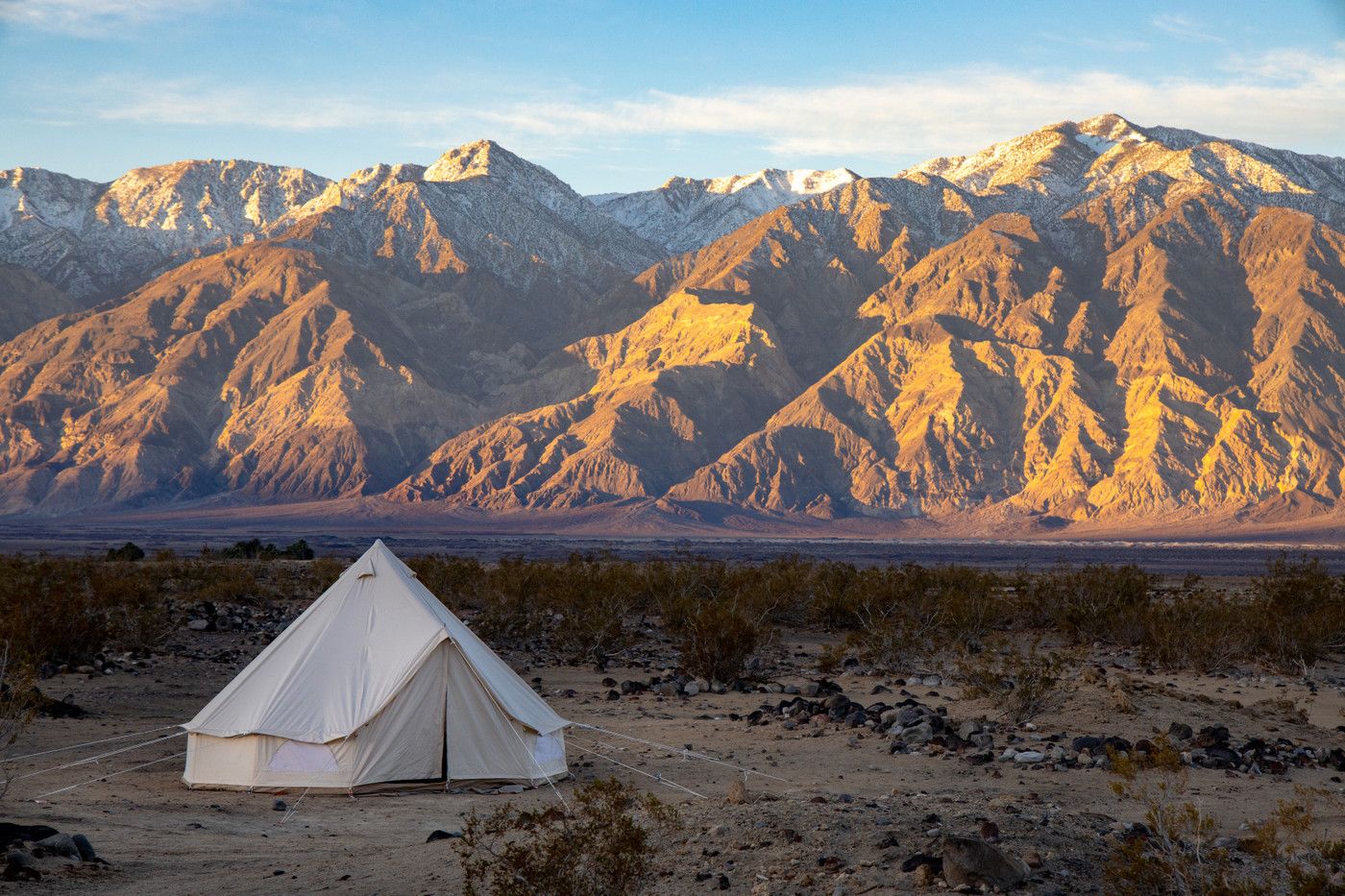
Accommodations and Camping
Death Valley offers several accommodation options, including hotels, cabins, and campgrounds. Furnace Creek is the most popular area for camping, with several campgrounds available. Make sure to reserve your space in advance, especially during peak season. If you're not interested in camping, there are several hotels and lodges within the park, including The Oasis and The Ranch.